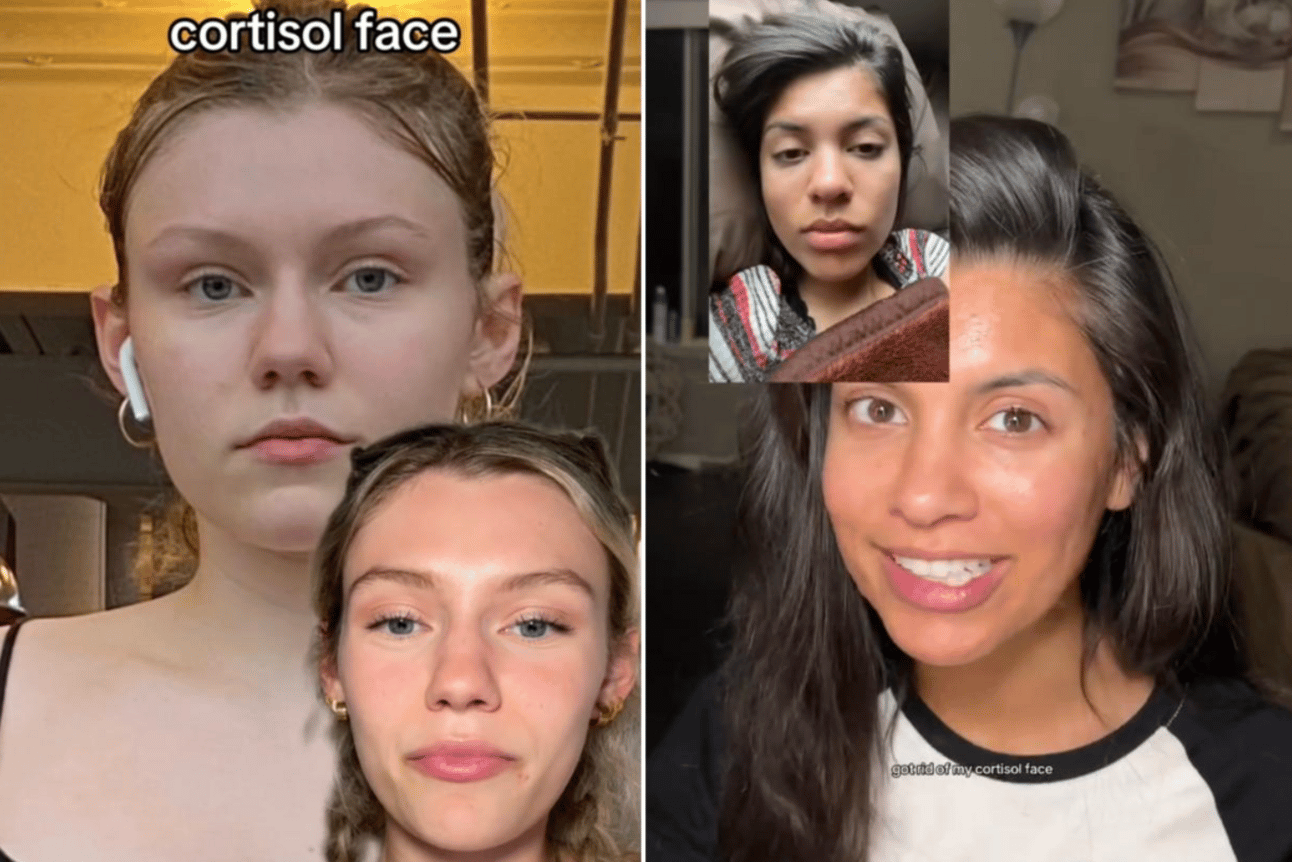- Aeviva
- Posts
- What Is “Cortisol Face” and How Stress Might Be Aging You Faster
What Is “Cortisol Face” and How Stress Might Be Aging You Faster
Chronic stress doesn’t just affect your mood—it changes your face. From sagging skin to stubborn fat deposits, “Cortisol Face” is a real phenomenon that accelerates aging. Here’s how to fix it.
You’ve heard that stress is bad for you—but did you know it can literally change the way your face looks? Chronic stress triggers high levels of cortisol, a hormone that, over time, breaks down collagen, stores fat in unexpected places, and even alters your skin texture.
If you’ve noticed puffiness, sagging skin, deeper wrinkles, or stubborn fat around the jawline and cheeks, cortisol might be the hidden culprit. This condition, often called “Cortisol Face,” isn’t just about aesthetics—it’s a sign that your body is under prolonged stress. The good news? You can reverse it.
The #1 App That Helps You Fall Asleep In Minutes
BetterSleep, the 5 star app that focuses on helping users sleep better and feel better daily.
Build and layer a unique personalized mix from over 300 unique sounds such as: green noise, ocean waves, heavy rain, arctic storms or even background bustle in a city cafe! Use sound science to send yourself to sleep and improve your restlessness.
By building your perfect dreamy soundscape and watch your sleep and your mornings improve in just 7 days!
What Is Cortisol and Why Does It Affect Your Face?
Cortisol is a hormone produced by your adrenal glands in response to stress. While it’s essential for survival, chronic high levels can wreak havoc on your skin, muscles, and fat distribution. Over time, an imbalance in cortisol can lead to:
Increased fat deposits around the face (moon face effect)
Loss of collagen, leading to sagging and fine lines
Thinner skin that bruises easily
Slower wound healing and increased inflammation
Acne breakouts due to excess oil production
💡 Fun Fact: High cortisol levels can break down proteins in the skin, leading to a hollowed or sunken look over time.
Signs of “Cortisol Face”
If your stress levels have been consistently high, you may start noticing these physical changes in your face:
Puffy or swollen cheeks and jawline due to fluid retention
Sagging skin and loss of elasticity from collagen breakdown
More pronounced wrinkles, especially on the forehead and around the eyes
Stubborn fat around the chin and jawline
Dull, tired-looking skin that doesn’t bounce back as quickly

Example of a cortisol face ⬆️
💡 Fun Fact: Cortisol also weakens the skin barrier, making you more prone to redness, irritation, and breakouts even if you’ve never had acne before.
How to Reduce Cortisol and Reverse Its Effects on Your Face
The best way to combat Cortisol Face is to lower stress levels and support your body’s natural repair processes. Here’s how:
Prioritize Deep Sleep – Poor sleep increases cortisol. Aim for 7-9 hours of uninterrupted rest.
Control Blood Sugar Levels – High-sugar diets spike cortisol. Stick to whole foods, fiber, and protein-rich meals to stabilize hormones.
Incorporate Magnesium and Adaptogens – Magnesium, Ginseng, and rhodiola help regulate cortisol and improve skin elasticity.

Adaptogens 🌱
Try Short, Low-Intensity Exercise – Overtraining increases cortisol, while gentle movement like walking, yoga, and stretching helps lower it.
Practice Breathwork or Meditation – Just 10 minutes of deep breathing daily can significantly reduce cortisol levels.
💡 Fun Fact: Studies show that laughter instantly lowers cortisol levels, making humor a real anti-aging hack.
Skincare & Supplements That Help Repair Cortisol Damage
While lifestyle changes are essential, certain skincare ingredients and supplements can help speed up collagen repair and restore skin firmness.
Vitamin C & Collagen Peptides – Boosts collagen production and strengthens skin structure.
Hyaluronic Acid & Omega-3s – Helps restore hydration and reduce inflammation.
Niacinamide (Vitamin B3) – Strengthens the skin barrier, reducing redness and irritation.
Adaptogenic Herbs (Ashwagandha, Holy Basil) – Regulates cortisol and prevents further damage.
💡 Fun Fact: Skin fasting—taking a break from skincare products—can help reset your skin’s natural oil production if cortisol has triggered excess oiliness or breakouts.
Interactive Section: Myth or Fact?

Which of these statements are true?
A) Cortisol can make your face both puffy and hollow over time.
B) Sleeping more than 6 hours has no impact on cortisol levels.
C) Over-exercising can actually make Cortisol Face worse.
D) Meditation has been scientifically proven to lower cortisol.
(Answer: A, C, and D! Sleep is crucial for cortisol balance, and too much high-intensity exercise can increase stress hormones rather than reduce them.)
Cortisol Face isn’t just about looks—it’s a physical sign that your body is under prolonged stress. While high cortisol can accelerate aging, the right lifestyle shifts can restore balance, improve skin elasticity, and reduce facial puffiness.
The key is to focus on stress management, balanced nutrition, restorative sleep, and collagen-boosting habits. With time and consistency, your skin can recover, and your face will reflect a healthier, more youthful you.
💡 Fun Fact: The fastest way to lower cortisol instantly? Deep belly breathing for 60 seconds—it signals your nervous system to relax.
Have you ever noticed the effects of stress on your face? What’s your go-to stress relief method?
Take-Home Summary
Cortisol Face is a real phenomenon where chronic stress alters facial structure, leading to puffiness, sagging, and deeper wrinkles.
High cortisol breaks down collagen and leads to unwanted fat redistribution in the face.
Key signs include swelling, loss of elasticity, increased fine lines, and dull skin.
Lowering cortisol through sleep, nutrition, breathwork, and adaptogens can reverse these effects.
Targeted skincare and supplements like collagen, hyaluronic acid, and vitamin C help rebuild the skin’s structure.


Reply